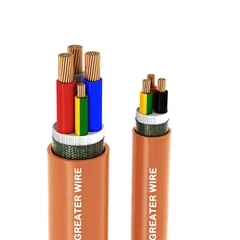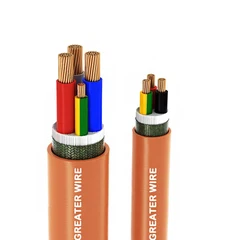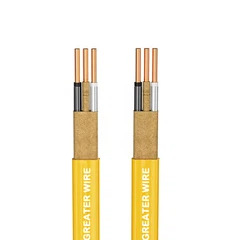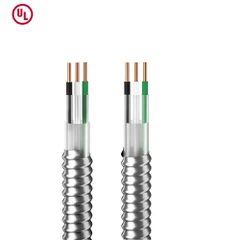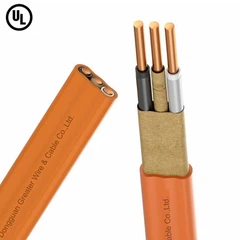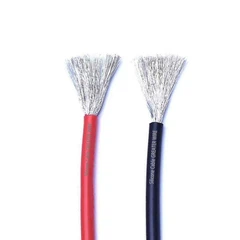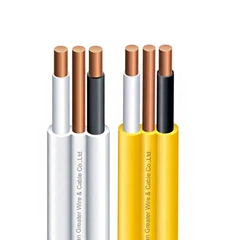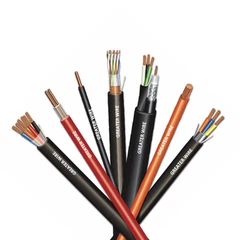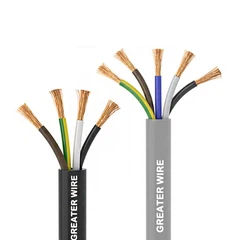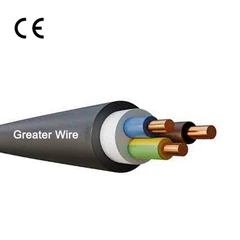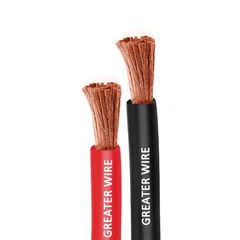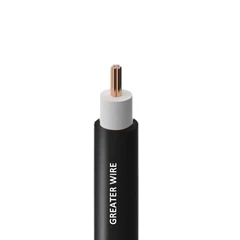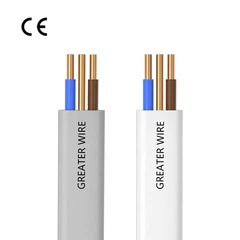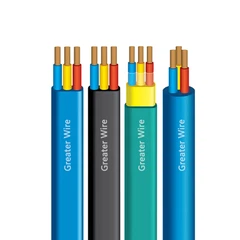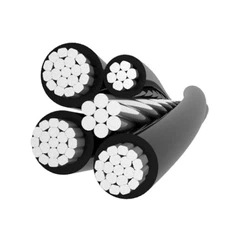When selecting electrical wiring materials, many users wonder whether silicone might damage the wire sheathing over time. Silicone cable and silicone insulated wire are widely used in industrial machinery, household appliances, and automotive applications due to their excellent flexibility, heat resistance, and durability. However, concerns arise regarding potential chemical interactions between silicone and different sheath materials. Understanding the compatibility of silicone with various sheathing compounds is essential to ensuring long-term performance and safety in electrical installations.
1. Material properties of silicone cable
1.1 Silicone chemical stability
Chemical stability of silicone: oxidation resistance, aging resistance, non-corrosive
Silicone rubber is known for its excellent chemical stability, which makes it an ideal choice for wire and cable insulation and sheathing materials. The inert properties of silicone are mainly reflected in the following aspects:
- Oxidation resistance: The silicon-oxygen bond (Si-O) in the molecular structure of silicone has an extremely high bond energy, which allows it to remain stable at high temperatures or when exposed to oxygen. Compared with traditional organic materials (such as PVC), silicone is not prone to oxidative degradation, thereby extending the service life of the cable.
- Aging resistance: Silicone exhibits excellent anti-aging properties in ultraviolet, ozone, and extreme temperature environments. For example, according to UL 3239 standards, silicone cables can still maintain their mechanical and electrical properties after long-term exposure to high temperatures (above 200°C), while PVC or TPE materials may harden or crack.
- Non-corrosive: Silicone is inert to most chemicals (such as acids, alkalis, and salts) and will not react with these substances. This makes silicone cables particularly suitable for fields such as the chemical and medical fields that require extremely high material compatibility.
Comparative experimental data
According to the IEC 60811 standard test, the compatibility of silicone with common sheath materials (such as PVC and TPE) is as follows:
Silicone vs. PVC: At a high temperature of 150°C, the PVC sheath material showed obvious embrittlement after 500 hours, while the silicone insulation layer remained flexible and intact.
Silicone vs. TPE: After long-term exposure to ozone, cracks appeared on the surface of the TPE material, while the insulation layer of the silicone cable did not change at all.
The scientific principle of flexibility
The flexibility of silicone comes from its unique molecular structure. The main chain of silicone is composed of silicon-oxygen bonds (Si-O), and the side chains are connected to organic groups (such as methyl or phenyl). This structure gives silicone extremely high flexibility and elasticity, allowing it to withstand repeated bending without breaking easily. This is why flexible silicone wire is favored in application scenarios that require frequent movement or bending (such as robots and automation equipment).
1.2 Performance of Silicone Wire in High-Temperature Environments
High-temperature silicone cable is designed to withstand extreme temperatures, typically ranging from -60°C to +200°C, with some specialized variants enduring even higher limits. This exceptional heat resistance prevents the wire sheathing from becoming brittle, cracked, or degraded under prolonged exposure to high temperatures. Unlike conventional insulation materials that may harden or lose flexibility, silicone maintains its elasticity and protective properties, ensuring long-lasting performance.
Due to these advantages, silicone-insulated wires are widely used in industrial heating equipment and automotive engine compartments, where exposure to intense heat is constant. Whether in electric furnaces, motors, or high-performance vehicle wiring, silicone insulation ensures reliable electrical transmission and enhanced safety in demanding conditions.

2. Does silicone damage the sheath of silicone wire?
2.1 Potential risks of silicone and solutions
While silicone-insulated cables offer excellent heat resistance and flexibility, certain extreme conditions can impact their long-term performance. Prolonged exposure to strong acids or bases may gradually degrade silicone's stability, making it necessary to use special protective sheathing for added chemical resistance in harsh environments.
Additionally, due to its soft and flexible nature, high-temperature silicone cable may experience increased friction and mechanical wear in high-movement applications. However, practical solutions, such as reinforcing with braided sleeving or selecting silicone cables with abrasion-resistant outer layers, can effectively prevent damage. For instance, in industrial automation, properly installed silicone cables with protective sheathing have demonstrated long-lasting durability even in high-vibration and high-friction settings, proving that correct installation and material selection ensure optimal performance and longevity.
2.2 Common misconceptions about silicone wire
Despite its widespread use, high-temperature silicone cable is often misunderstood. Two common misconceptions include doubts about its insulation performance and mechanical stability.
- "Silicone cables have poor insulation properties."
In reality, silicone rubber has excellent dielectric strength, typically ranging from 20 to 30 kV/mm, making it a highly effective insulator. Industry tests based on IEC and UL standards confirm that silicone-insulated wire provides reliable electrical insulation, even under high voltage conditions.
- "Silicone deforms easily and causes short circuits."
While silicone is softer than some other insulation materials, this does not mean it compromises safety. Modern flexible silicone wire formulations include flame-retardant additives that enhance thermal stability and structural integrity. These materials comply with RoHS and fire safety regulations, ensuring that silicone cables do not easily deform under heat and remain safe for long-term electrical use.
By understanding these facts, users can confidently choose silicone-insulated cables for applications requiring high flexibility, heat resistance, and reliable insulation.

3. Silicone cable usage recommendations
To maximize the performance and lifespan of high-temperature silicone cable, proper installation and handling are essential. One key consideration is avoiding contact with sharp metal edges, as repeated friction or cutting forces may damage the cable's soft insulation. Using protective sheathing or routing cables away from abrasive surfaces can prevent premature wear.
In high-temperature environments, effective heat dissipation design is crucial. While silicone-insulated wire can withstand extreme temperatures, proper spacing, ventilation, or heat-resistant conduit placement helps maintain optimal performance and safety. These precautions ensure long-term durability and reliable electrical transmission in demanding applications such as industrial heating systems and automotive engine compartments.
4. Future trends of silicone cables
The future of silicone cables is shaped by two key developments: environmental sustainability and advanced technology. As part of the growing eco-friendly trend, the research and development of recyclable silicone materials is gaining momentum. This innovation aims to reduce environmental impact by making silicone more sustainable while retaining its high-performance characteristics like flexibility and heat resistance.
On the technology front, the application of nano-filler technology is significantly enhancing the abrasion resistance and durability of silicone cables. By integrating nanoscale materials into the silicone matrix, manufacturers are improving the cable's long-term reliability, making it even more suitable for high-stress, high-wear environments. This advancement strengthens the position of silicone cables in industries like industrial automation, automotive, and renewable energy, where both performance and sustainability are increasingly prioritized.
If you're looking for a reliable silicone wire for your project or have any questions about silicone cables, don't hesitate to reach out to us. With over 30 years of manufacturing expertise, Greater Wire Manufacturer is here to provide you with the best solutions. Our team is available 24/7 to assist you contact us anytime for expert advice and top-quality products!

